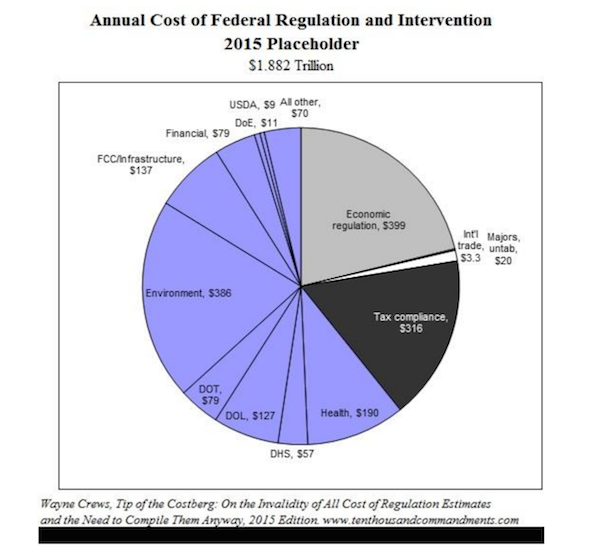 What is the annual cost of regulations for America?
What is the annual cost of regulations for America?
The short answer is that no one knows for sure. The officially reported regulatory costs as reported by the Office of Management and Budget (OMB) total up to $128.7 billion. But the real costs of regulation is impossible since, as the Nobel-winning economist James Buchanan said, “Cost cannot be measured by someone other than the decision-maker because there is no way that subjective experience can be directly observed.”
Still, we can attempt to estimate the costs based on factors that can be measured. Clyde Wayne Crews Jr. of the Competitive Enterprise Institute provides an example of such an estimate. His findings:
[T]he non-tax cost of government regulation of and intervention in the economy, without performing a sweeping survey, appears to total up to $1.882 trillion annually. Give or take. But probably give; See the pie below: Here are some numbers, but the most interesting ones are probably missing.

As Crews notes, this is costs that is in addition to the cost of funding the federal government:
Again it is important to clarify that these regulatory compliance costs and costs of intervention are non-budgetary; that is, they are not what the federal government spends, or its outlays; they are an amalgam of what the private sector spends on regulatory compliance, estimated economic impacts of rules, some indirect costs (not much here), as well as some undifferentiated component that consists of unfunded mandates on states and lower level governments.
How much government regulation is necessary for legislative compliance that leads to human flourishing is a question open for debate. But the American people deserve to know what those costs are so that we can decide if it’s worth the price.

